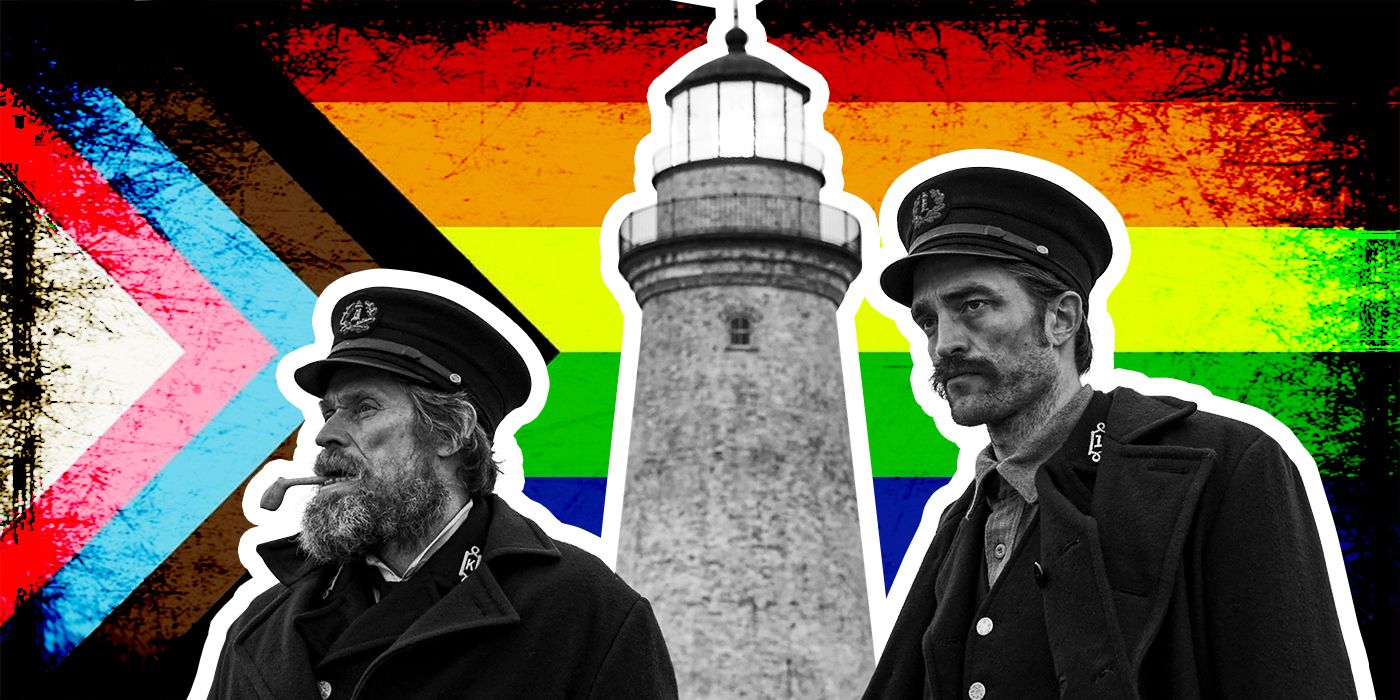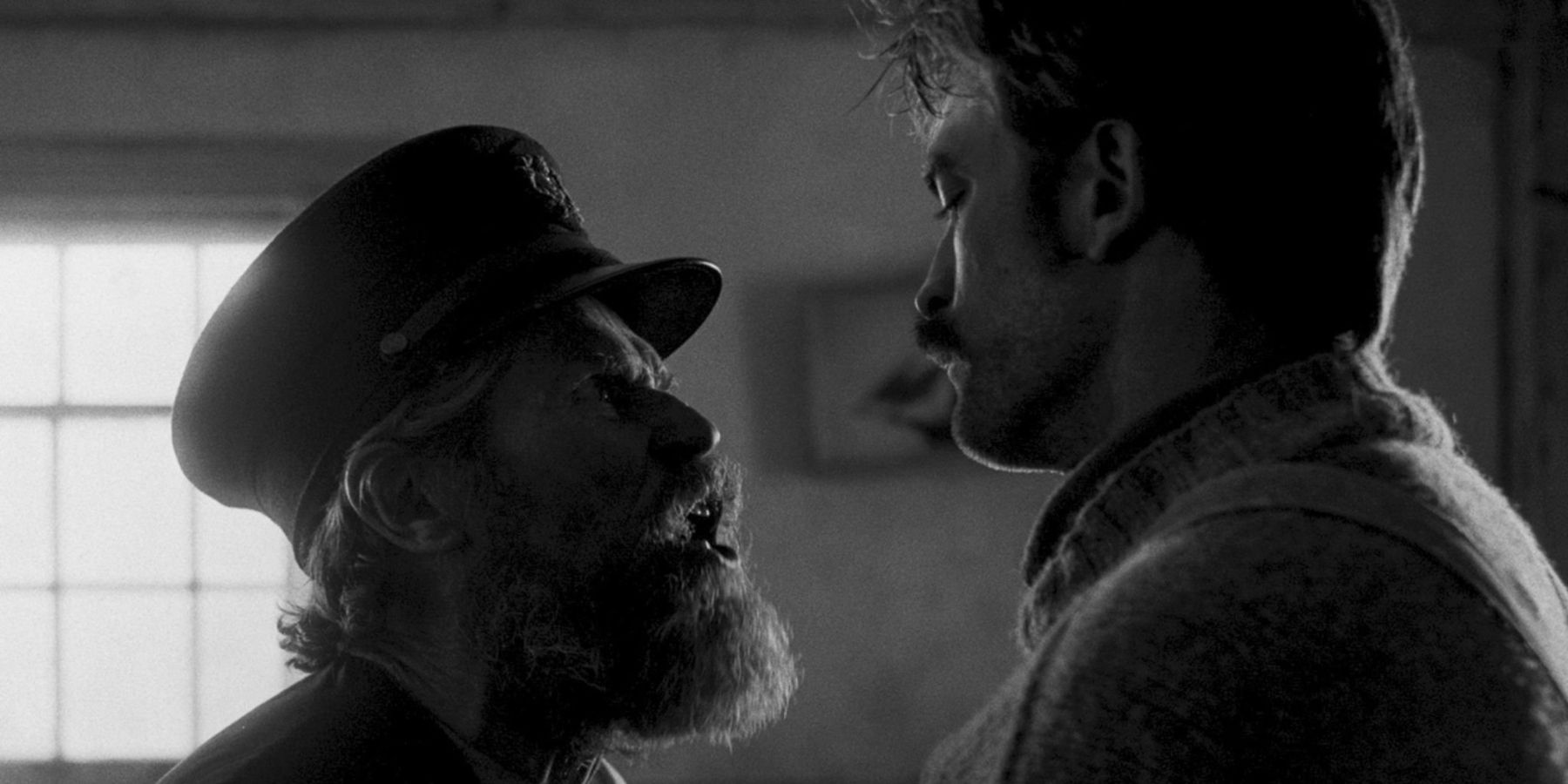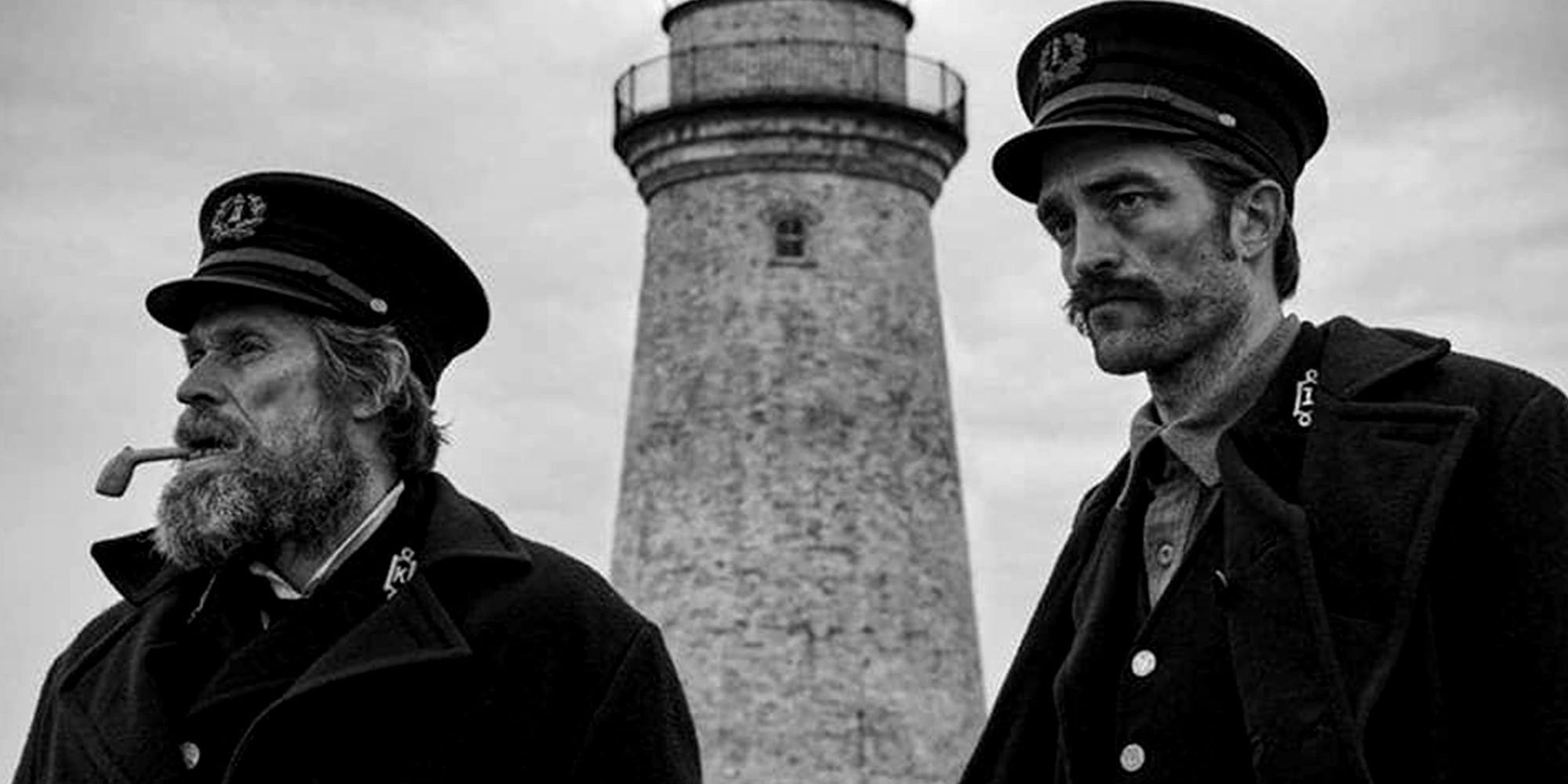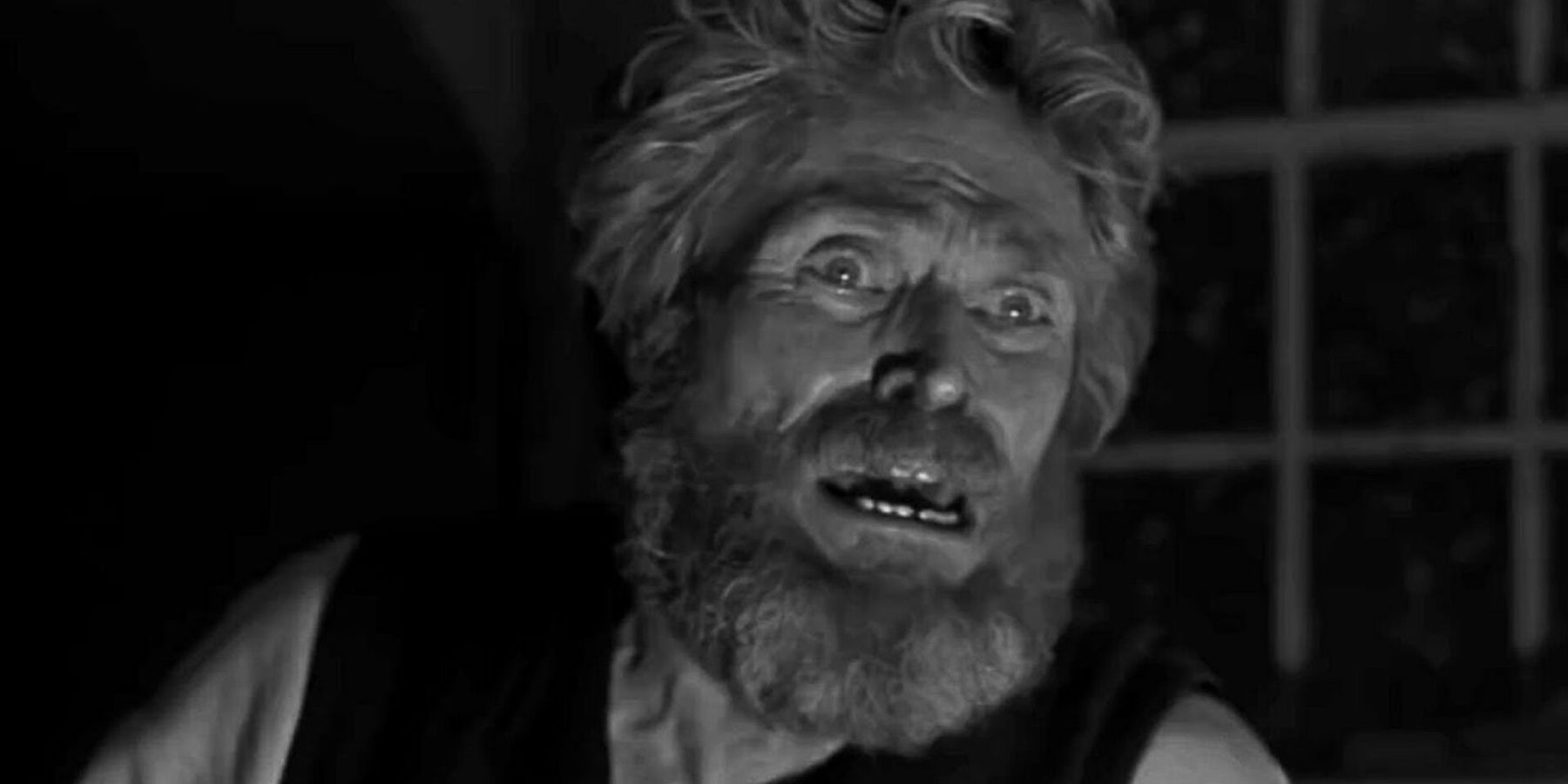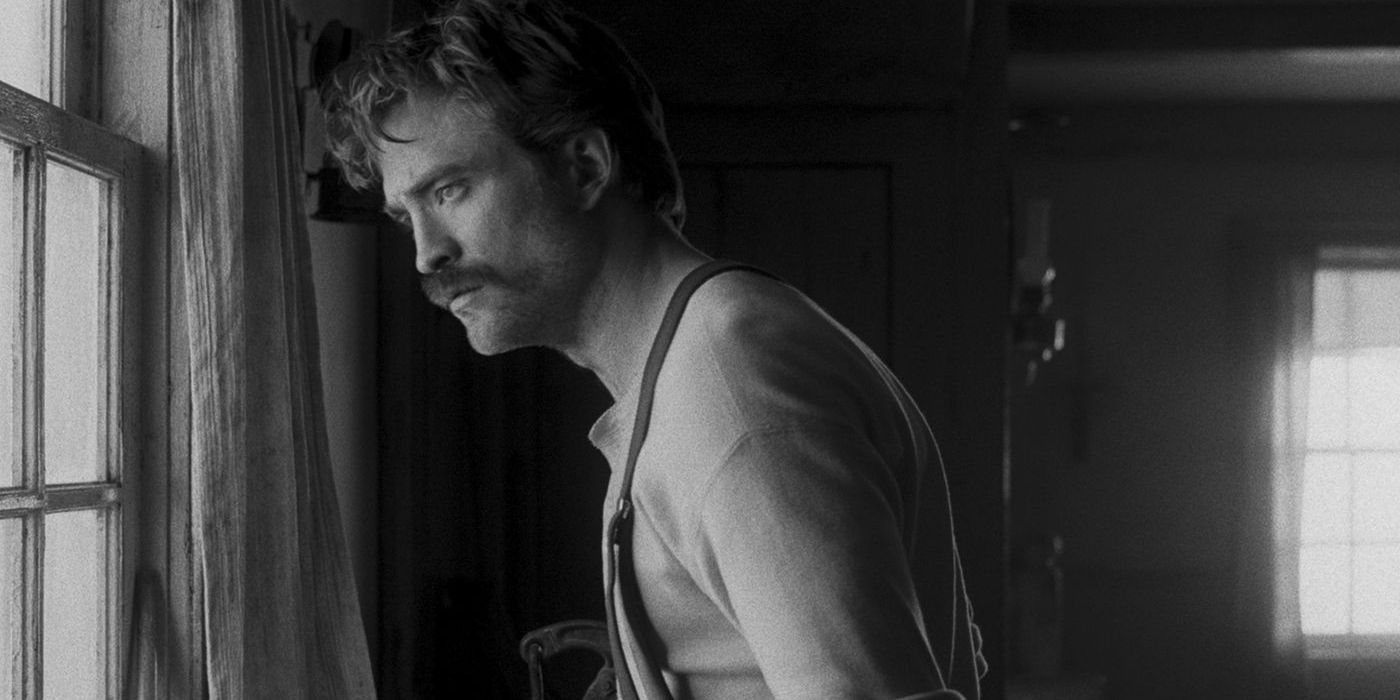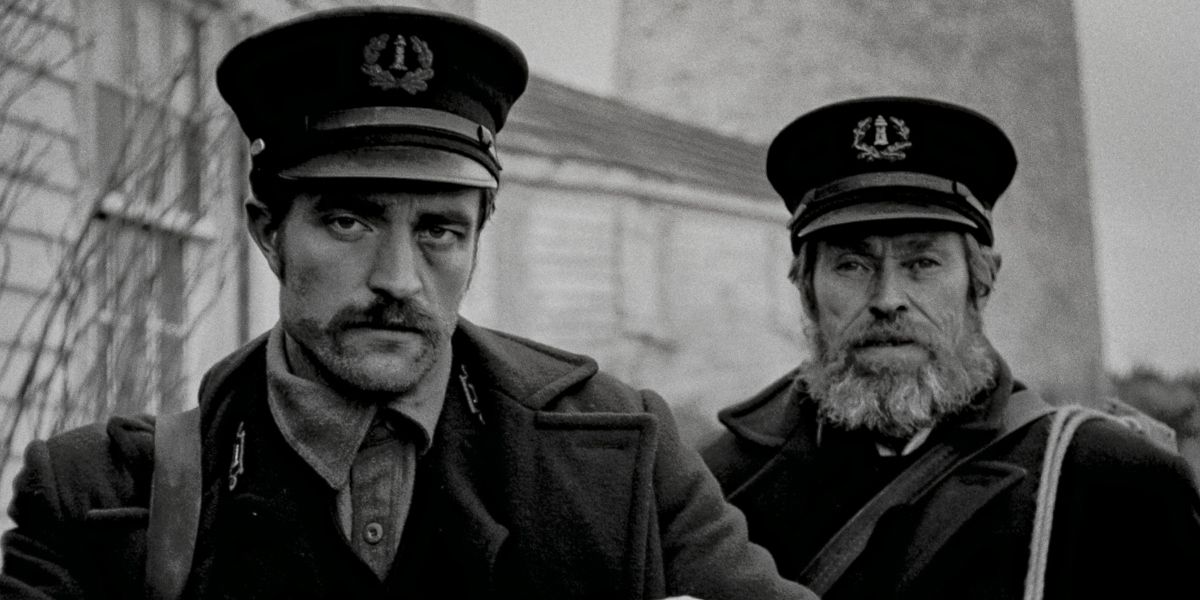Horror has always been a venue for exploring repressed feelings, traumas, and desires, so much so that “psychological thriller” has become a popular catch-all phrase for many horror films. Take, for instance, Jennifer Kent’s The Babadook, in which the titular boogeyman can be read as an allegory for a mother’s grief and trauma, or A Nightmare on Elm Street 2: Freddy’s Revenge, which not so subtly hints at the protagonist being gay. Many horror movies further explore ways in which queer and queer-coded characters explore their sexual and gender identities. Robert Eggers’ The Lighthouse falls into this category. While the dynamic between the film’s two lighthouse keepers seems to be more hate-hate than love-hate, Eggers’ psychedelic imagery, the pseudo-domestic comedy between the two lighthouse keepers, and the homoerotic overtones demonstrate how The Lighthouse is actually a queer romance.
The Lighthouse follows two men tasked with keeping up the operations of a lighthouse on a far-away, secluded island. Ephraim Winslow (Robert Pattinson) plays the younger lighthouse keeper who has run away from his previous occupation in the Canadian woodlands. According to Winslow, he took the job at the lighthouse for better pay so he could ultimately settle down on his own, like his despised father, with no one to tell him what to do. Thomas Wake (Willem Dafoe) is his supervisor and the commanding lighthouse keeper. Wake is much older and more eccentric, claiming to have had a life at sea for many years while his wife and children left him. Wake orders Winslow around, “like a dog,” and while Winslow follows, he hates it. To add to Winslow’s frustrations, Wake prevents him from tending to the light at the top of the lighthouse, spurring his jealousy.
While Eggers’ choice of black-and-white cinematography and 1.19:1 aspect ratio was intended to evoke the photography of the film’s late-nineteenth-century setting, the film’s square look also evokes the shape of many 1950s sitcoms like I Love Lucy. The film not only looks the part of a sitcom, but the story also sets up Winslow and Wake’s relationship as a husband and wife making a living in a lighthouse.
Wake, as the dominant commanding officer, plays the controlling husband who gets to enjoy ordering his wife around inside the house. But he also enjoys giving it to ‘another woman’ — the light which he tends to at night. While the shape of the lighthouse is phallic, it’s interesting to note how Wake refers to the light itself as feminine: “To ye, my beauty.” Maybe this is a trace of Wake’s old seafaring life, in which ships and vessels are referred to as “she.” The lighthouse too juxtaposes the figure of the mermaid – whereas mermaids call out to sailors to meet their demise, the lighthouse brings sailors to safety. The lighthouse’s mingling of masculine and feminine adds to the film’s queerness, and the fact that it is caught in a love triangle between Winslow and Wake is just another comparison to be made with the tropes of rom-coms and sitcoms, albeit disrupting normative standards.
Winslow, on the other hand, plays the subservient housewife, cleaning and mopping the floors, throwing out their waste buckets into the ocean, and having to deal with Wake’s constant farts. Winslow even explicitly mentions how he “never intended to be no housewife.” While these gender roles are obvious in the actual sitcoms of the 1950s, these husband-wife dynamics can be overlayed onto Winslow and Wake’s love-hate relationship. Their bedroom, too, evokes a sitcom stage set — their two beds so close together with one thin wall between them. One can imagine how, if Eggers had swapped out the ominous soundtrack for more wacky soundbites and a laugh track, The Lighthouse could have made for an interesting domestic comedy about two lighthouse keepers.
Winslow, on the surface, seems to reject any notion of intimacy with another man. He not only tries to cling to his heteronormative masculinity by asserting himself against Wake’s alphamale energy, but he also forces himself to find sexual satisfaction with the figure of a mermaid. He masturbates to a ceramic figurine and has dreams and visions of naked mermaids, much of which takes place in a supply closet — a specific, queer-coded image. On the other hand, Wake seems to be satisfied with whatever “thing” the light is — his nightly, naked personal time with it oozes with semen (of course, the pun of “sea-men” is not at all lost).
Winslow’s attraction, or at least innocent curiosity, towards Wake is further shown in how he is constantly spying on the older gentleman. He looks through a hole in the roof to find Wake masturbating in bed, and he spies on Wake’s nighttime intimacy with the light. In short, Winslow is a voyeur.
Wake also shows mutual affection for Winslow, often when drunk. Wake even inhabits the housewife role, offended that his partner doesn’t enjoy his cooking. “You don’t like me cookin’?” Wake asks, to which Winslow states, “Don’t be such an old bitch!” As the film goes on, despite their butting heads, Wake and Winslow eventually bond with each other. They not only dine together, but in their drunken bouts, dance together. Of course, when they dance too close, too intimately, Winslow backs away and puts up his fists — another attempt at repressing his queer desire. And yet, Winslow confesses in his vulnerable drunken state, “I trust you.” The shared intimacy between Winslow and Wake can’t be denied, and there is even an element of will-they/won’t they.
But Winslow is always rejecting his desire for Wake, and this repression always erupts into violence. They shout and wrestle time and time again. But in their final confrontation, this violence takes on overtly homoerotic tones. As he suffocates Wake on the floow, Winslow hallucinates Wake turn into a seductive mermaid, then into a sea creature version of wake himself. Though Wake returns to his normal, human form, Winslow puts a leash on him — some S&M imagery — and leads him out to his burial. In these sequences, we see Winslow struggle with his attraction/repulsion towards Wake, ultimately leading to the old man’s death.
The Lighthouse is ultimately about a young man’s denial of his queer identity. This denial has been happening throughout Winslow’s life as we learn from his past. Ephraim Winslow is actually Thomas Howard. Howard had taken Winslow’s name from his former coworker — the original Ephraim Winslow — who, allegedly, died in an accident. But it isn’t so hard to believe that Howard had exhibited the same desire for Winslow as he does with Wake. Just as Howard’s rejection of his queer identity led to the death of Thomas Wake, his refusal to accept his desire for Ephraim Winslow may have also led to his “accidental” death. He is in fact a murderer. Howard must kill the object of his desire in order to repress his queer identity. Despite his inner impulses, he still wants to abide by traditional masculinity as a straight, white alpha male.
In all its disturbing and horrific imagery, The Lighthouse is still about a queer romance. But the romance doesn’t lead to a happy ending because neither man wants to admit and submit to their sexual desires. Though they swap gender roles from time to time, Howard and Wake’s emasculating journey only results in madness and insanity. In a society that favors traditional masculinity—especially during the film’s 1890s New England setting—queer masculinity is viewed as a threat. Thomas Howard internalizes this toxic standard. As such, he is fated to die tragically, his body consumed by seagulls, said to contain the spirits of deceased sailors. The film follows in the tradition of other queer horror films, like The Rocky Horror Picture Show, in which queer characters meet a tragic fate while straight characters help restore normative societal standards. Horror is the perfect vehicle for such stories — that which is hidden, that which is repressed, will always find a way out.

